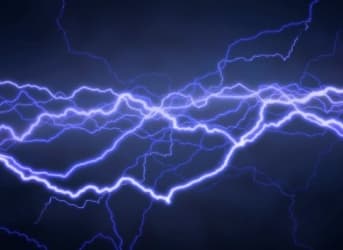Researchers in London say they’ve come up with an entirely new way to generate and direct electrical currents in semiconductors by focusing on an alternative to the current approach.
The yin and yang of electrons are “charge” and “spin.” Conventional technology focuses on charge, but many scientists believe a switch to spin could perform even better -- not only increasing power storage but also improving information processing.
Scientists’ understanding of the charge and spin phenomena dates back to the late 19th-century scientist Edwin Hall, who recognized the production voltage differences across an electrical conductor. This is called the Hall effect. Then there is a derivative of the Hall effect, called the spin-Hall effect: the appearance of spin accumulation on the lateral surfaces of a conductor of electrical current.
As obscure as that sounds, it amounts to taking advantage of the electron’s movement, or “spin” -- a technology called “spintronics.” This method, if applied correctly, can process information about an electron’s spin by using very little energy.
To do so, scientists need to learn more about how the spin-Hall effect works. But already their research has made great progress, and if they ultimately succeed, they’ll have unlocked the secrets to a world of new electronic devices.
In a study published in Nature Materials, researchers from University College London (UCL) explain that the spin-Hall effect helps generate “spin currents,” which transfer information about an electron’s magnetic spin without relying on currents of electric charge.
This is unique in electronics because, lacking an electric charge, it generates no heat, and heat is a liability for devices such as batteries that rely on semiconductors.
Although they haven’t learned everything about exactly how the spin-Hall effect works, their article reported that semiconductor materials based on spintronics are 40 times more efficient than those based on charge currents.
So far, such efficiency has been achieved only with expensive heavy metals such as platinum, and with a generous dose of energy. But the UCL team got the same results using less costly materials and less power.
Hidekazu Kurebayashi of the UCL London Centre for Nanotechnology, the report’s lead author, explains that because the Earth’s exotic natural resources are limited and their prices are rising, a search is on for less expensive materials to create technologies of the future.
Kurebayashi says spintronics is a likely candidate for this sustainable approach. He points to the trend of miniaturization of the past half-century, which must eventually hit a wall because a transistor, for example, can be shrunk to a size no smaller than an atom. As a result, he says, revolutionary new technologies will have to be developed to meet the needs of increasingly powerful computers.
“We borrowed 50-year-old semiconductor phenomena for our modern spintronic research,” Kurebayashi told UCL News. “Our results are [only] the start of the story, but are a proof of principle with a promising future for spins.”
By Andy Tully of Oilprice.com


















